OHS 元件可讓您輕鬆採用 FHIR。您可以單獨使用,也可以合併使用,構成端對端數位健康平台的基礎。
以 FHIR 為基礎的 Android 應用程式
開發人員可以使用 Android FHIR SDK,快速建構 FHIR 原生 Android 應用程式。SDK 是一組模組化的程式庫,專為各種用途靈活設計。這些 API 包括:
- 使用現有應用程式中的結構化資料擷取程式庫,透過 FHIR 收集資料
- FHIR Engine 程式庫 在 FHIR 上建構離線第一個解決方案
- 工作流程程式庫的進階功能,可提供 WHO 智慧指南內容以 CQL 為基礎的臨床決策支援。
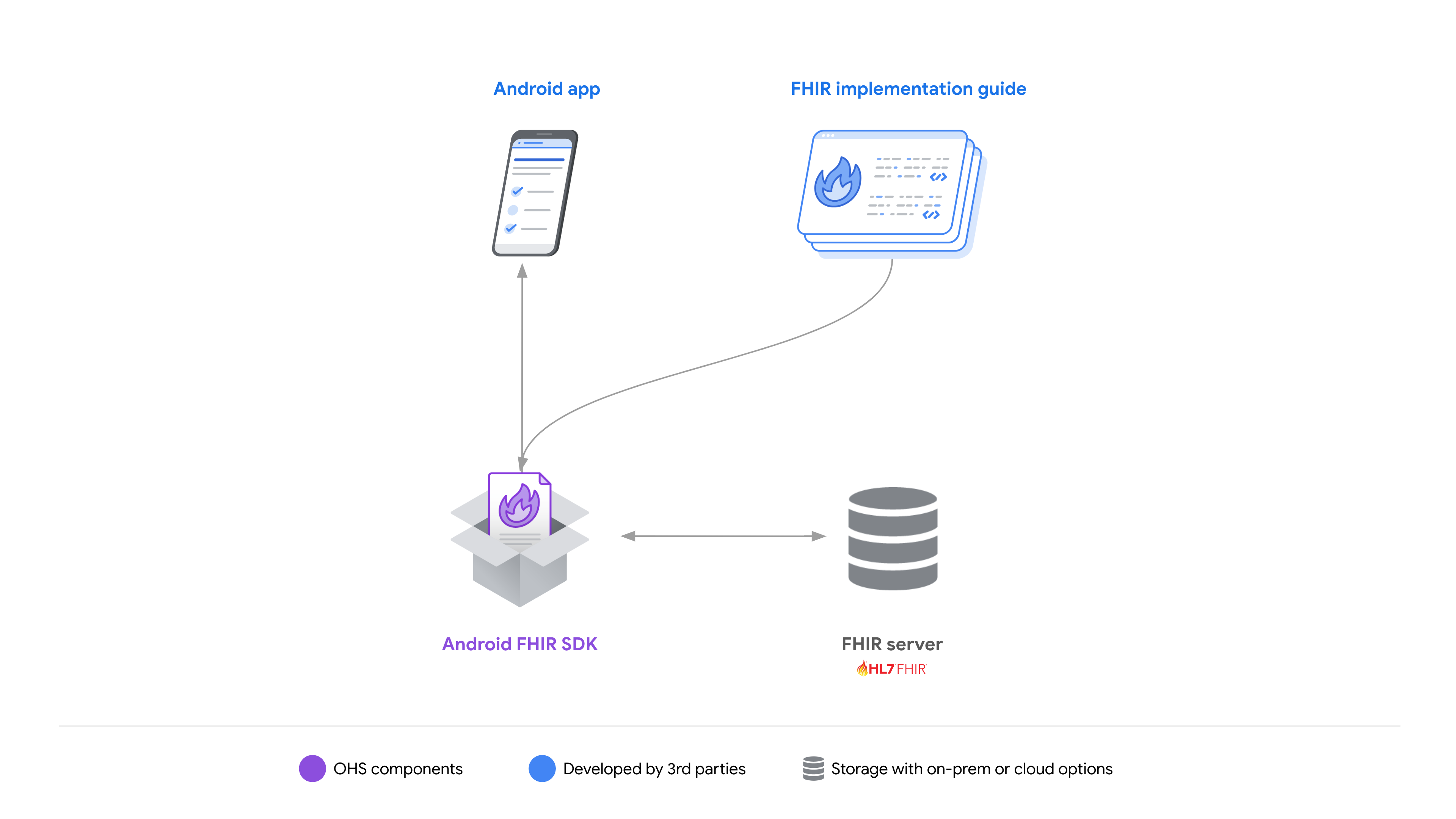
資源:
- 透過 SDC 程式碼研究室快速開始使用。
- 進一步瞭解開發人員如何使用 OHS 建構行動解決方案。
強化隱私保護,運用 SMART-on-FHIR
FHIR Info Gateway 是獨立的反向 Proxy,可部署至任何應用程式之前,可加強隱私保護,並可讓您輕鬆實作機構存取權控管政策。與採用 Android FHIR SDK 的應用程式搭配使用時,資訊閘道也可以改善同步處理作業,例如限制特定健康工作者在離線工作時可以下載及存取的病患資料。
資訊閘道可做為獨立 Proxy,支援與 SMART-on-FHIR 應用程式整合。
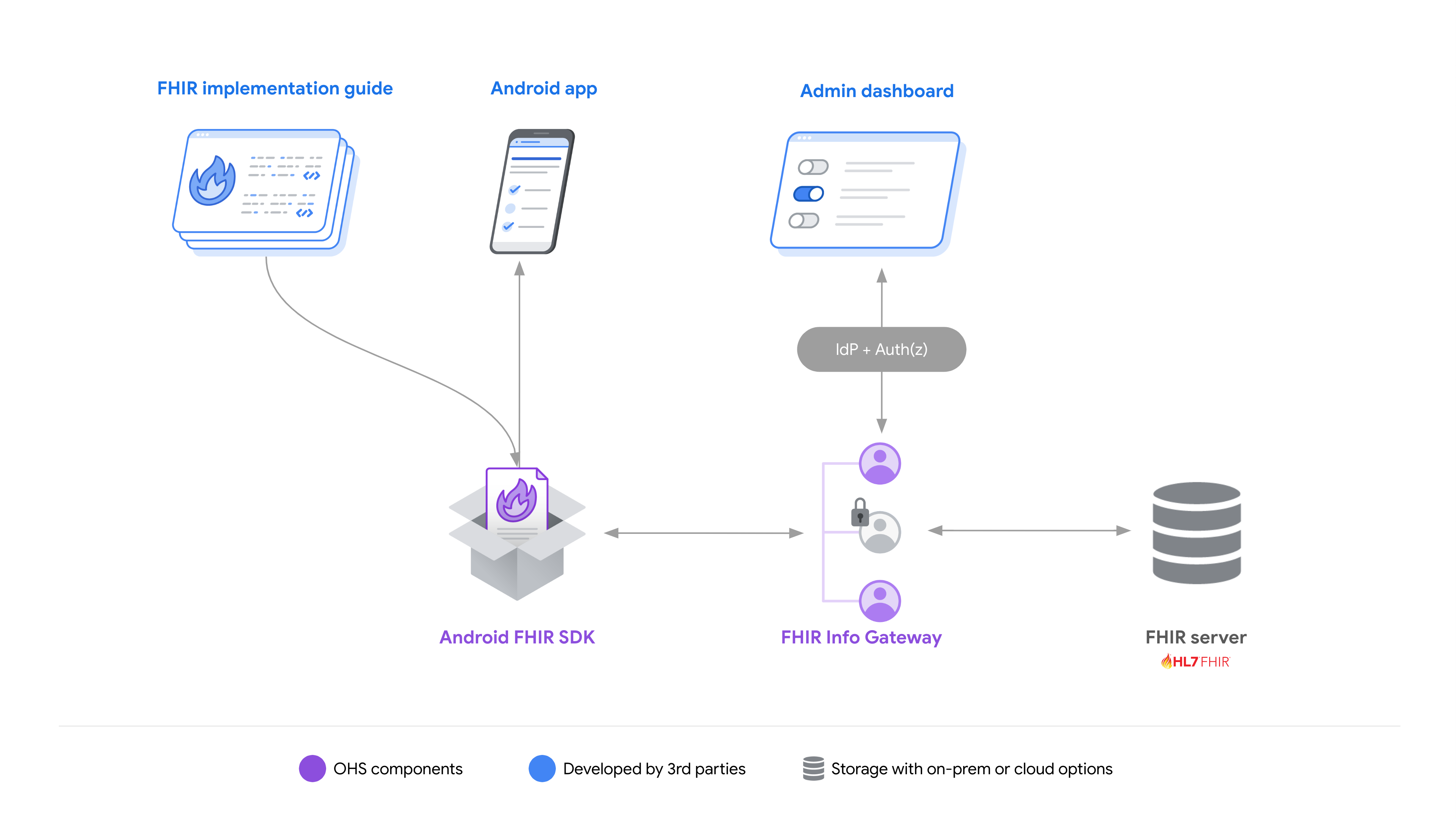
資源:
- 探索 FHIR 應用程式範例存放區,瞭解 FHIR 資訊閘道如何與其他 OHS 元件搭配使用。
FHIR 數據分析解決方案
由於 FHIR 資料高度巢狀結構,撰寫查詢來產生深入分析可能並不容易。FHIR 資料 Pipes 提供易於部署及水平擴充的管道,可將 FHIR 資料轉換成 SQL-on-FHIR 格式,進而簡化問題,讓您能夠透過 SQL 查詢 FHIR 資料。
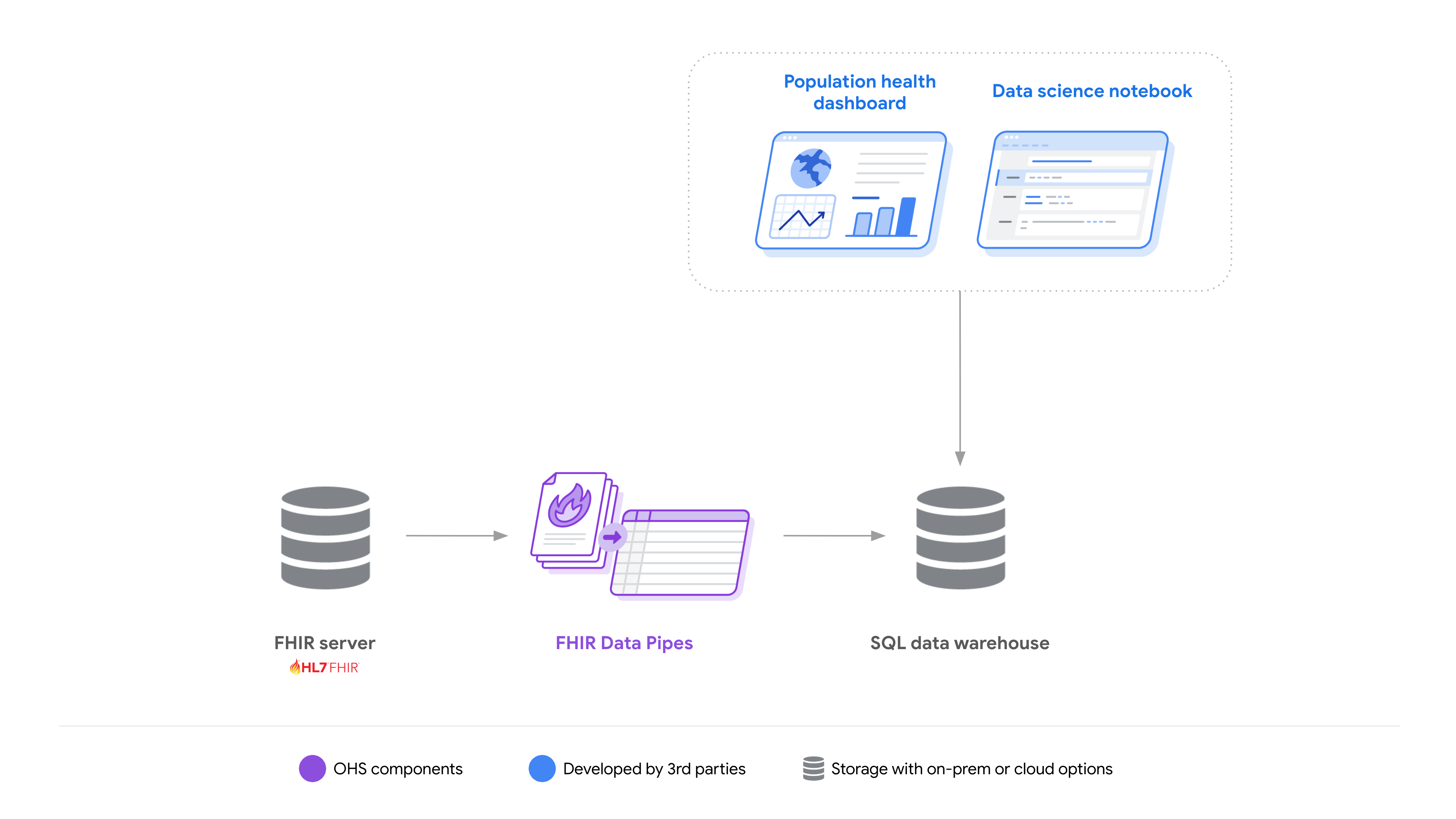
FHIR 資料管道在處提供實用資源,其中 FHIR 是待分析資料的來源。開發人員的常見情境包括:
- 此為 FHIR 原生行動健康解決方案的延伸:參閱端對端數位健康解決方案的基礎。
- 做為使用 FHIR 的獨立數據分析解決方案的一部分,請參閱混合架構範例。
資源:
- 參閱單一機器部署教學課程,瞭解如何快速上手。
- 探索 FHIR 應用程式範例存放區,瞭解如何將 FHIR Data Pipes 與其他 OHS 元件搭配使用。
端對端數位健康解決方案的基礎
搭配使用所有 OHS 元件可為開發人員奠定基礎,建構 FHIR 式平台或解決方案。透過提供同步處理和離線功能等多種核心功能,並降低與 FHIR 合作的技術複雜度,開發人員可以省下大量時間,並將更多心力放在解決方案的附加價值上。
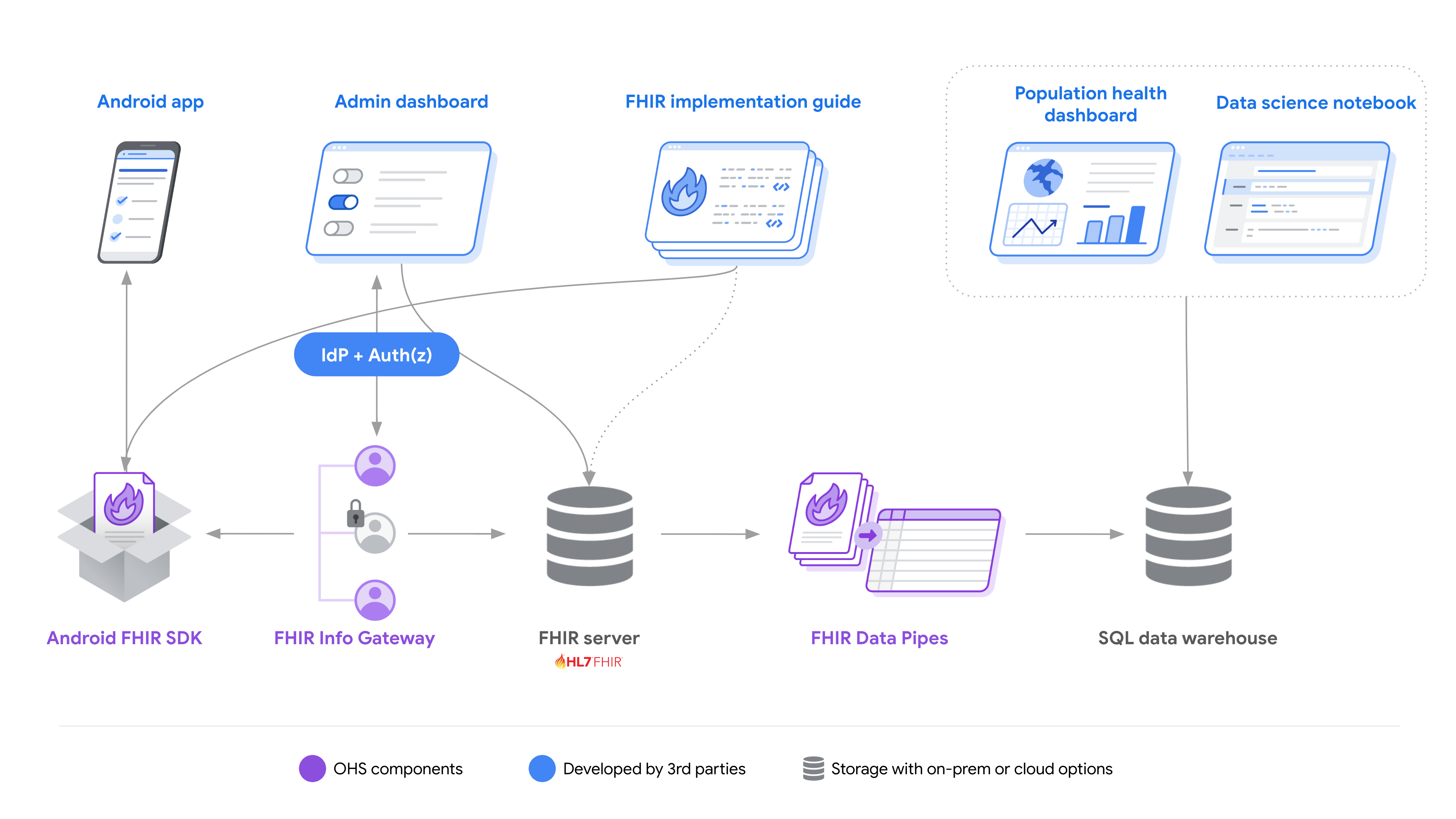
資源:
- 探索 FHIR 應用程式範例存放區,瞭解所有元件如何搭配使用。
- 瞭解 Ona 如何使用 OHS 建構 OpenSRP FHIRCore。
混合型架構範例
OHS 元件模組性可讓開發人員挑選及選擇最能協助他們解決特定問題的項目。
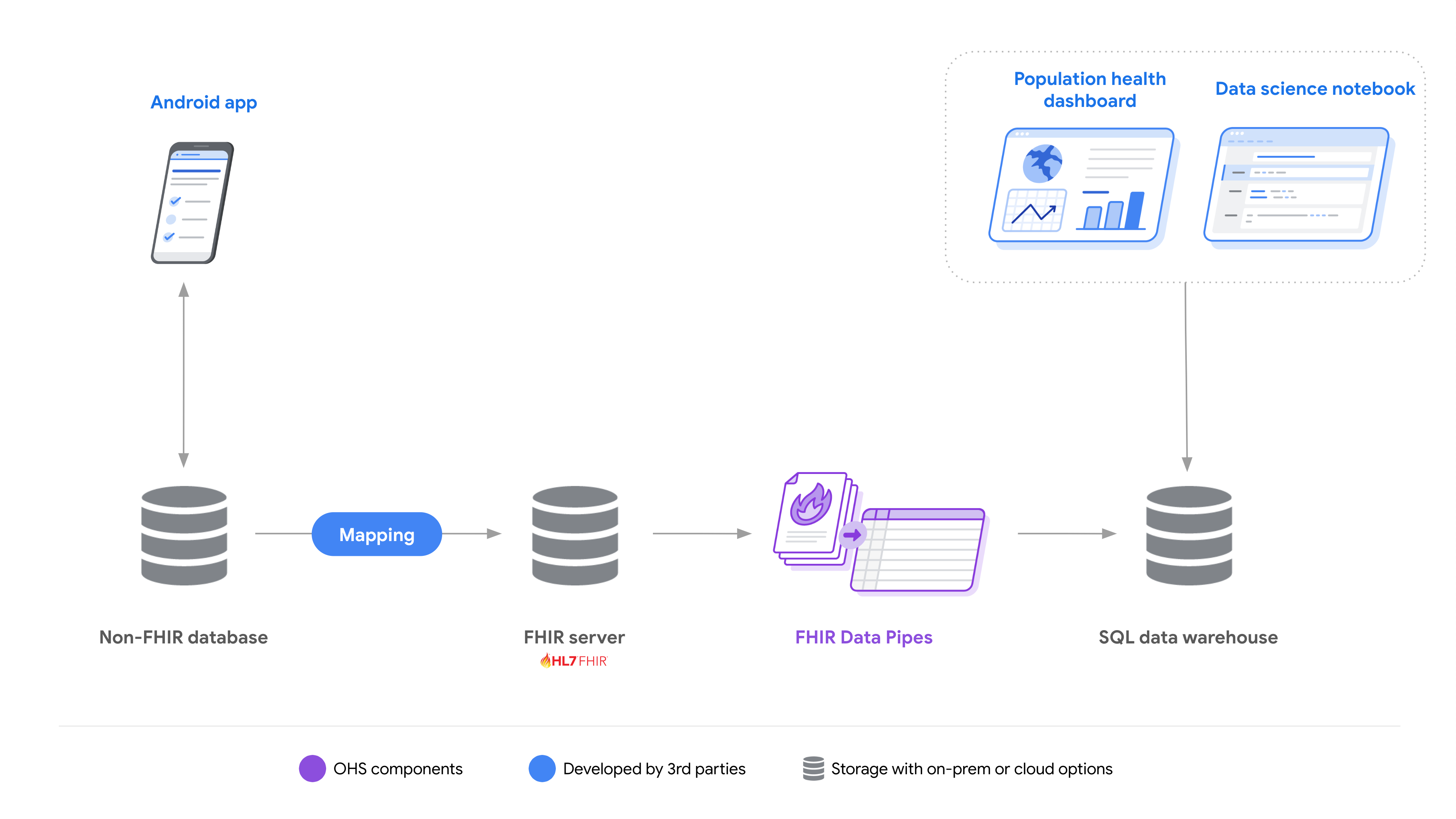
許多例子都有助於將現有系統的一部分轉換至 FHIR,同時維持解決方案的其他部分。這些服務包括:
將非 FHIR 資料收集作業傳送至 FHIR 式分析:在這個情境中,以非 FHIR 方式收集的資料會轉換為 FHIR,以便使用 OHS FHIR 資料管道,從 FHIR 資料產生深入分析。如要轉換資料,開發人員可使用現有的供應商 API、現有的第三方服務 (例如 Global Goods 核准的 OpenFn),或是利用相關的開放原始碼專案。
FHIR 原生應用程式到非 FHIR 系統:在這種情境中,使用 Android FHIR SDK 建構的 FHIR 原生行動應用程式會用於離線照護,以及與 FHIR 伺服器同步的資料。您可以從 FHIR 伺服器開發人員實作與現有系統、第三方轉接程式或自訂程式碼的整合。
資源:
- 探索 FHIR 應用程式範例存放區,瞭解所有元件如何搭配使用。

